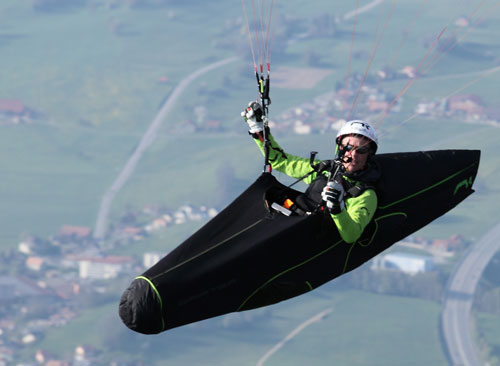Both human power and typical electric motors (or I should say - batteries less than that of Tesla) benefit a lot from aerodynamic efficiency. A road bike-like 'tucked in position' is not terribly effective and uncomfortable. A fully recumbent position is effective and comfortable, but compromises control and visibility/vision.
So, an upright position + fairings seems like an interesting idea.
A full fairing is great, but VERY tricky to pull off and has ingress-egress issues and rider cooling issues in case you want to pedal.
Front fairings leads to 'wind steer' and are not terribly effective because they do not do anything about 'pressure recovery' - eliminating 'suction' behind the trailing edge.
Tailboxes should work - but anecdotally few find them worth it, due to giving only 5, at best extra 10% cruising speed at most.
Problem with typical tailboxes is that human body is a terrible leading edge, and without a proper leading edge there is almost no chance of pressure recovery - air is 'splashed to the sides' instead, generating wide wake.
So, here is my take on the problem... It all started with this picture from NASA:

And running CFD simulation of a similar 'geometric primitive' that confirmed that, here is how it looks like:
Speed field:
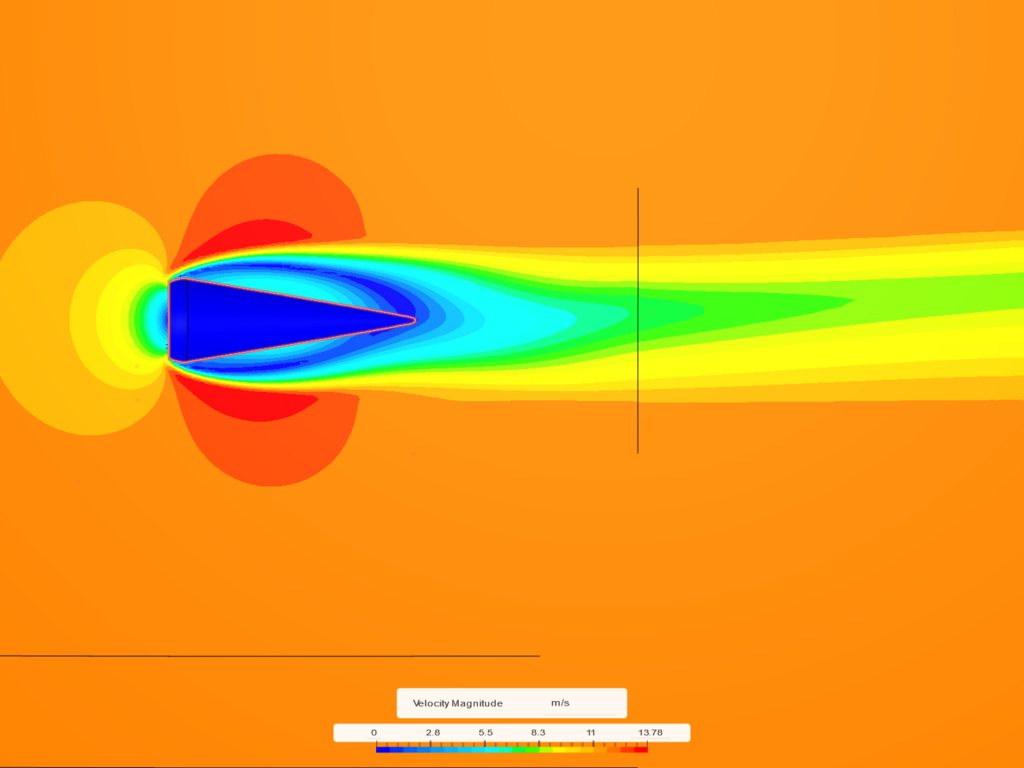
HUGE separation going on. No chance of pressure recovery.
Turbulence:

Basically, we have huge vorticity created by separation bubble.
Resulting Cd 0.87 Less than 1.14 in Nasa example - that's because of the bevel. Without it, things are basically the same.
Talking 'airfoil shapes'...
Naca 0025, full:
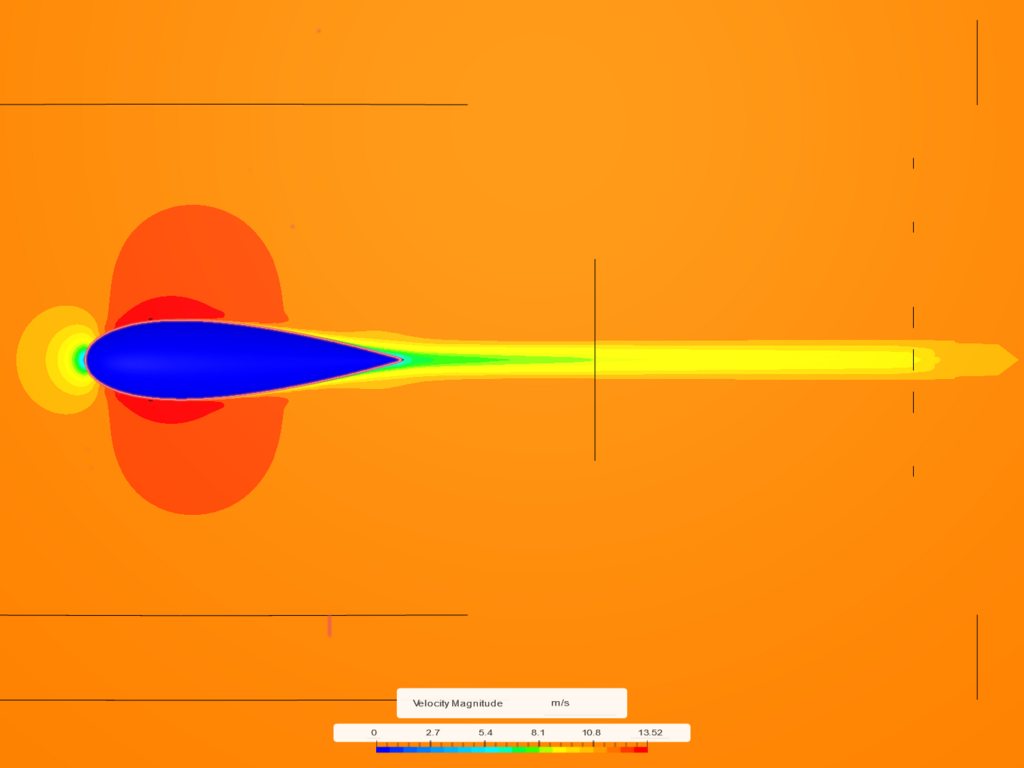
The wake is tiny, and CD 0.05
Now, let's try lopping the tip off a bit...
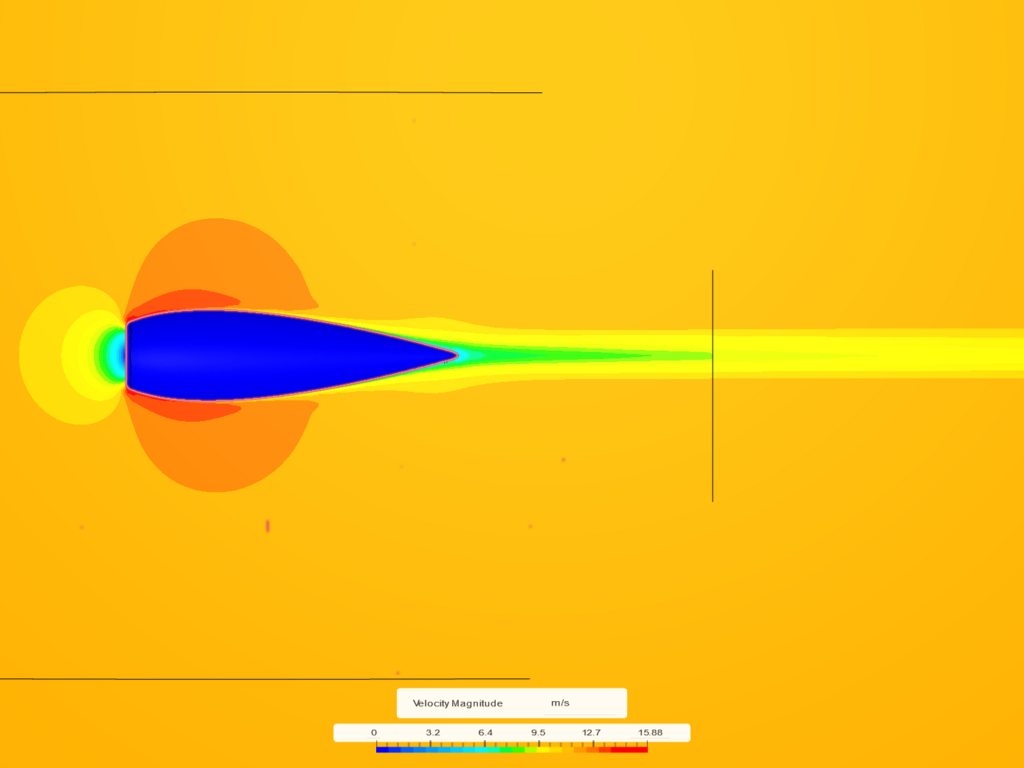
Well, I'll be damned. Drag is higher, but only 0.055 now! This can work!
But resulting airfoil is damn huge, if made to the size of human body (and the flat section represents a human, so it must be 40-45cm wide at the 'base' and ~60cm at the widest point! Even wider in my case, unfortunately... )
Let's try and Kamm it to get it to 140cm:
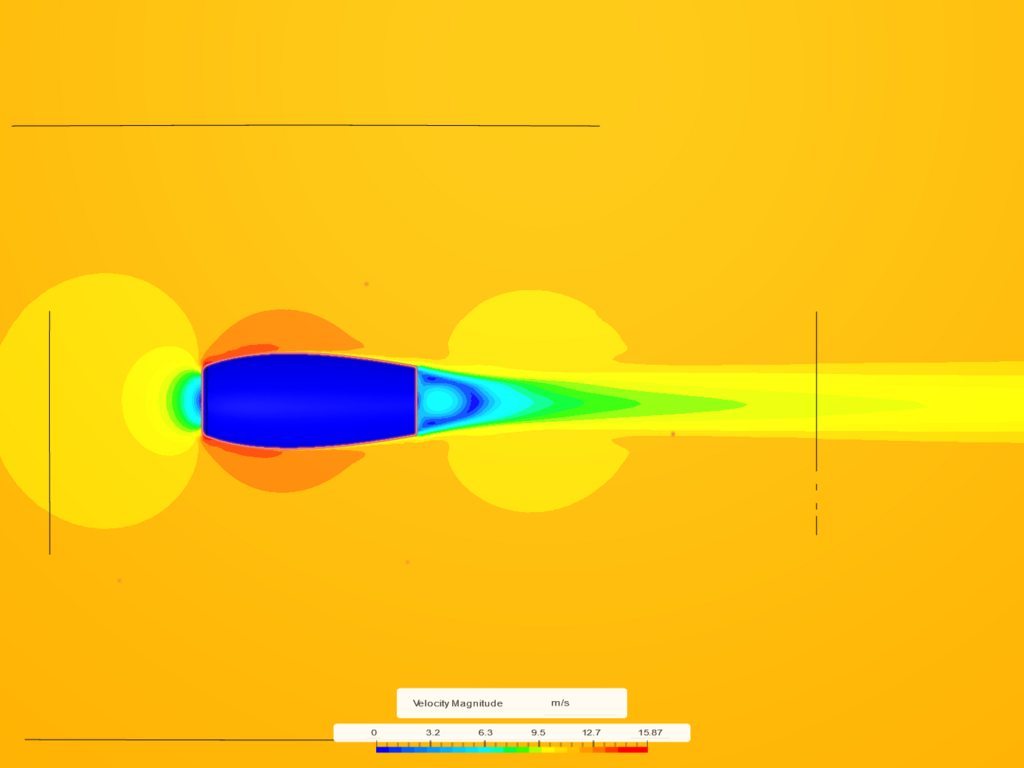
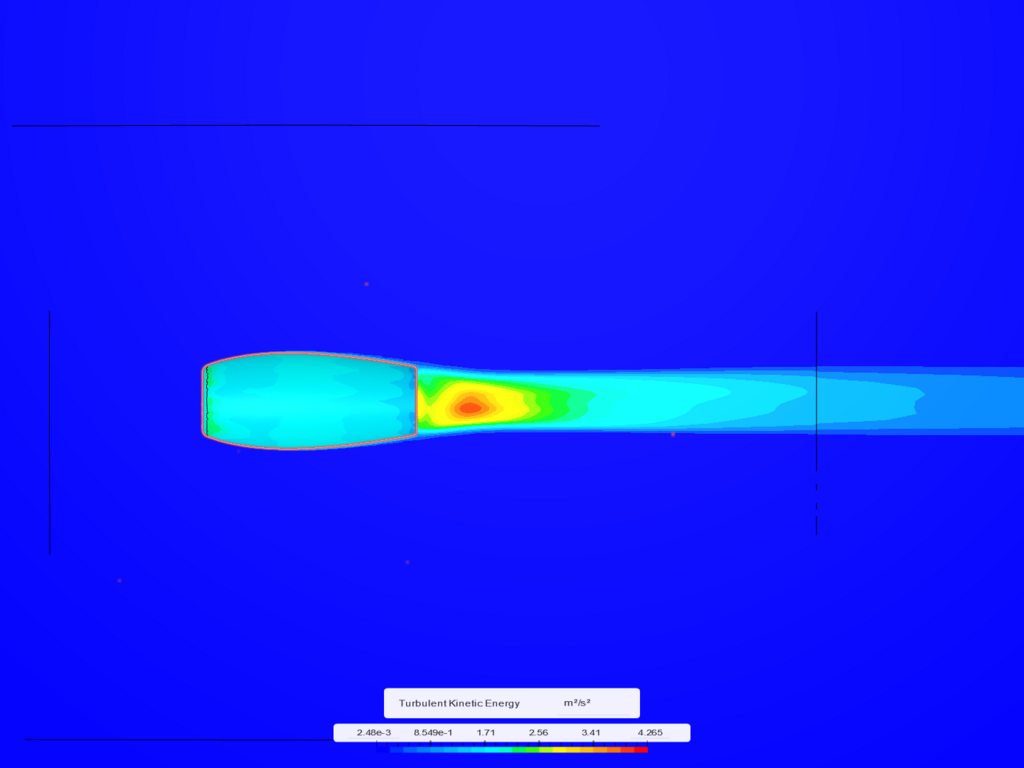
Ok, a bit too much, drag coefficient shoots up to 0.1 - nearly double.
ell, I can use a different naca - 0030, it's shorter for it's width, and kamm a bit less, leaving total length at 150cm - which is something I can live with provided that tailbox does not stick out past the rear wheel too much.

Well, hot damn x2!
Calculated drag coefficent is actually LESS than 'whole' NACA 0025 - 0.045!
This actually might be a modelling artefact, but how it comes to this conclusion kind of makes sense - there is more pressure drag, but much less viscous (surface friction) drag as well, and I've read that Naca 0030 (which is about 3 times as long as it is tall) is kind of optimal when it comes to classic airfoil shapes so far as pressure/skin friction is concerned, so yea, that might be true.
Well, I don't have much resources left on my free CFD account, let us try to use this shape to create an actual 'Mother of all tailboxes'!
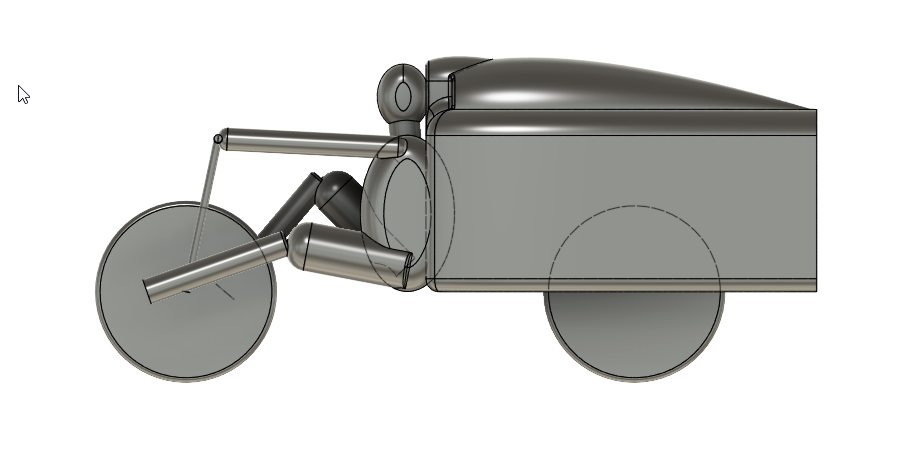
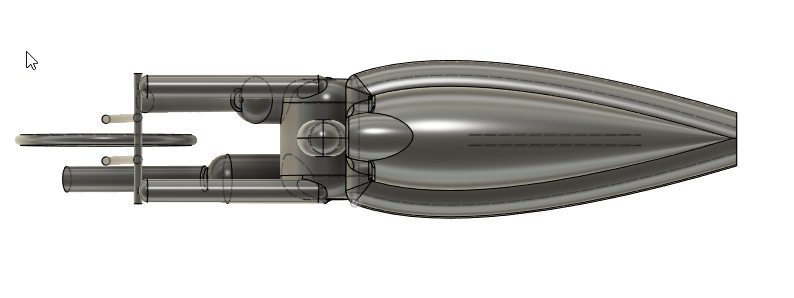
I have created a monster! Yes, this is a coaxial MBB arrangement that would work just great for this purpose, resulting in even weight distribution, and low BB that I think is very important because flailing legs in your crossection might work well on unfaired bent, but would likely actually disrupt air flow and prevent tailbox from doing it's just with utmost efficiency.
I've run this model in CFD and got... slightly disappointing results - the tailbox does seem to work, but instead of 0.045 I now have 0.4 Cd (an order of magnitude more) and resulting CdA is 0.2 (total frontal area is almost exactly 0.5 m^2) - which is actually pretty cool, like a well-optimised highracer with a medium-sized rider in a highly reclined position or a TT bike (also pretty well optimised), but not exactly ground-breaking. Not that I expected Cd like that of a BM speedbike, but still...
But what's this?
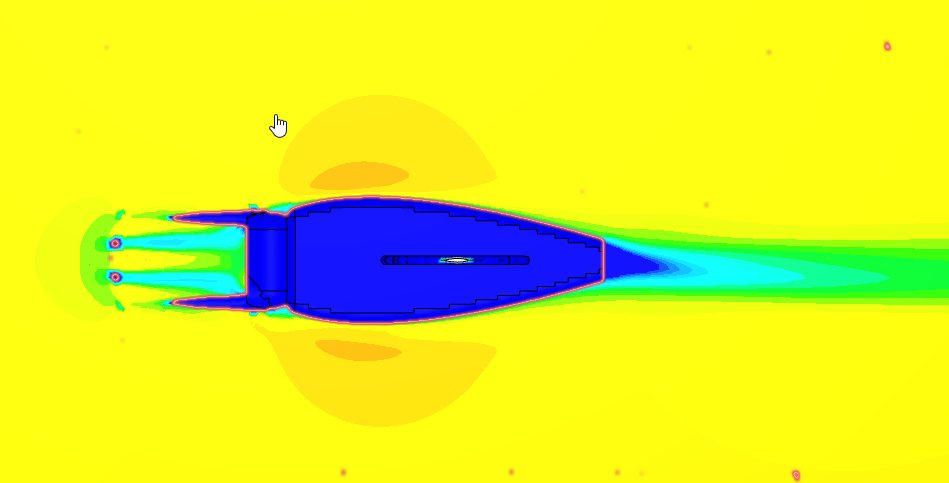
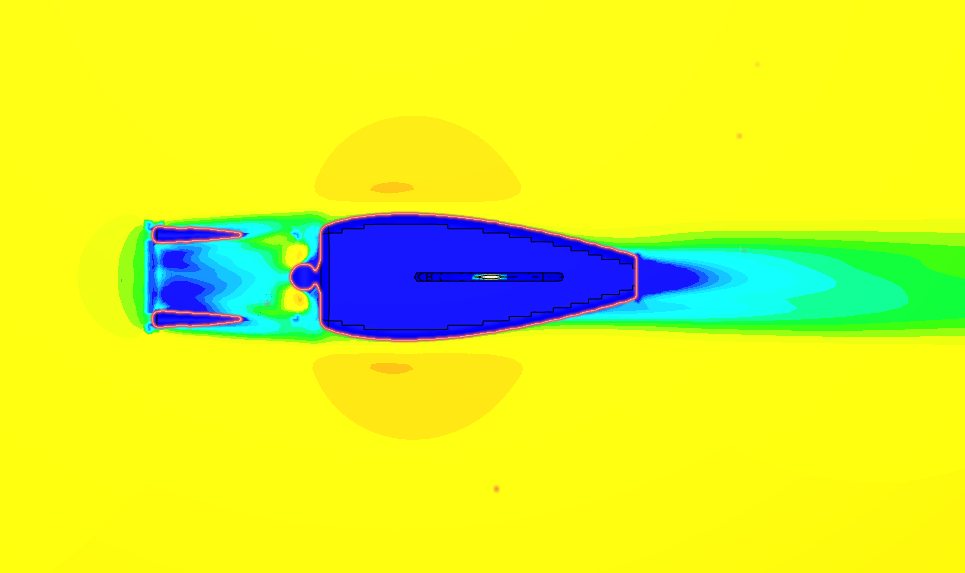
Round tubes of forks and bars create THIS much drag (and turbulence)?!
It looks like it generates like half the drag of entire bike!
https://commons.wikimedia.org/wiki/File:Hoerner_fluid_dynamic_drag_coefficients.svg
Well, apparently a long round cyliner does create a ton of drag!
Also, underbody flow with flat bottom seems not perfect either. Let's try a version two...

So, I've basically changed the forks and bars to NACA 0030 airfoils and reshaped the tailbox a bit.
Speed:
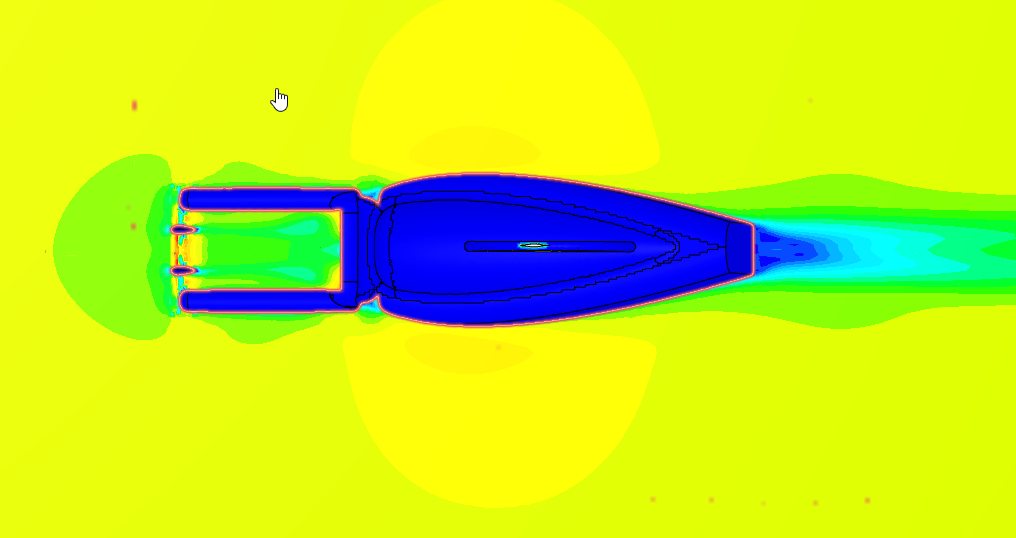
Pressure:

Turbulence:
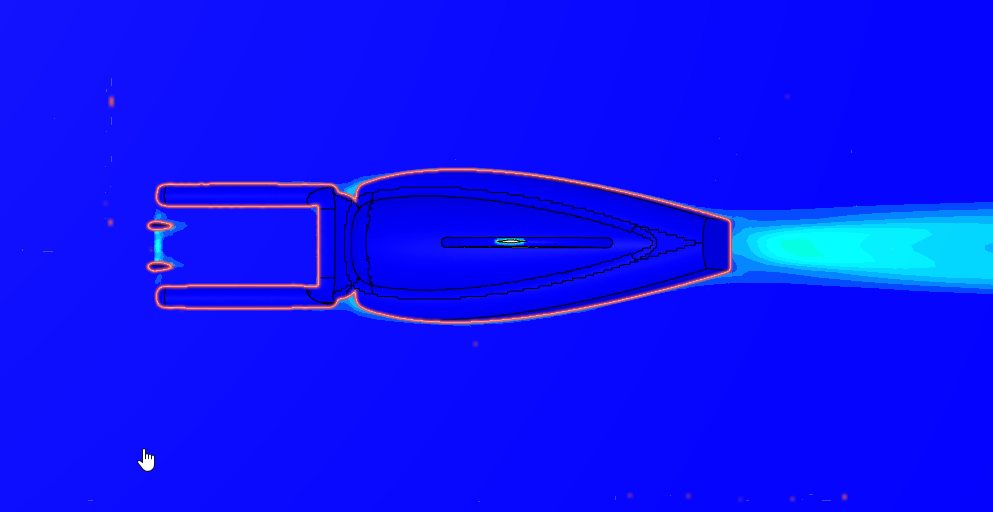
Ok, there is clearly some interference drag going on (talking about tendency to make aero fork 'legs' much wider for marginal aero gains), but at least not a whole lot of turbulence.
But main point is, Cd dropped to 0.25 and my CdA is now 0.125 - which almost exactly that of a NoCom lowracer and close to older generation 'fast' velomobiles!
Of course, this a simulation, and I don't have effect of pedalling, aero drag of of transmission bits, spinning wheels, even feet (pedal fairings are a must, I think)... but this must be close to truth and pretty damn cool for a bent with completely upright position (body english!) and wide-ish bars, zero ingress-egress and rider cooling issues. Also, since tailbox is wider than the body, if made sturdy enough - it will still offer protection from road rash and will be VERY visible on road.
So, preliminatry finding is, if you want your tailbox to be REALLY effective, it must be wider, and considerably, than your body, very long and shaped as a proper airfoil, and be somewhat '3d', so there would be no turbulence at the top and bottom, also it should include head fairing because head is pretty un-aero as well.
For someone who want 'legal-ish' and effecitive ebike, simply using overruning pedal hub would likely work great - you have option to help with pedal on very steep hills and during starting (very low single gear), and once up to speed the hub freewheels. No chain at all.
I'll be trying to implement this construction I think - this should be easier than a full fairing by far.
So, an upright position + fairings seems like an interesting idea.
A full fairing is great, but VERY tricky to pull off and has ingress-egress issues and rider cooling issues in case you want to pedal.
Front fairings leads to 'wind steer' and are not terribly effective because they do not do anything about 'pressure recovery' - eliminating 'suction' behind the trailing edge.
Tailboxes should work - but anecdotally few find them worth it, due to giving only 5, at best extra 10% cruising speed at most.
Problem with typical tailboxes is that human body is a terrible leading edge, and without a proper leading edge there is almost no chance of pressure recovery - air is 'splashed to the sides' instead, generating wide wake.
So, here is my take on the problem... It all started with this picture from NASA:

And running CFD simulation of a similar 'geometric primitive' that confirmed that, here is how it looks like:
Speed field:

HUGE separation going on. No chance of pressure recovery.
Turbulence:

Basically, we have huge vorticity created by separation bubble.
Resulting Cd 0.87 Less than 1.14 in Nasa example - that's because of the bevel. Without it, things are basically the same.
Talking 'airfoil shapes'...
Naca 0025, full:

The wake is tiny, and CD 0.05
Now, let's try lopping the tip off a bit...

Well, I'll be damned. Drag is higher, but only 0.055 now! This can work!
But resulting airfoil is damn huge, if made to the size of human body (and the flat section represents a human, so it must be 40-45cm wide at the 'base' and ~60cm at the widest point! Even wider in my case, unfortunately... )
Let's try and Kamm it to get it to 140cm:


Ok, a bit too much, drag coefficient shoots up to 0.1 - nearly double.
ell, I can use a different naca - 0030, it's shorter for it's width, and kamm a bit less, leaving total length at 150cm - which is something I can live with provided that tailbox does not stick out past the rear wheel too much.

Well, hot damn x2!
Calculated drag coefficent is actually LESS than 'whole' NACA 0025 - 0.045!
This actually might be a modelling artefact, but how it comes to this conclusion kind of makes sense - there is more pressure drag, but much less viscous (surface friction) drag as well, and I've read that Naca 0030 (which is about 3 times as long as it is tall) is kind of optimal when it comes to classic airfoil shapes so far as pressure/skin friction is concerned, so yea, that might be true.
Well, I don't have much resources left on my free CFD account, let us try to use this shape to create an actual 'Mother of all tailboxes'!


I have created a monster! Yes, this is a coaxial MBB arrangement that would work just great for this purpose, resulting in even weight distribution, and low BB that I think is very important because flailing legs in your crossection might work well on unfaired bent, but would likely actually disrupt air flow and prevent tailbox from doing it's just with utmost efficiency.
I've run this model in CFD and got... slightly disappointing results - the tailbox does seem to work, but instead of 0.045 I now have 0.4 Cd (an order of magnitude more) and resulting CdA is 0.2 (total frontal area is almost exactly 0.5 m^2) - which is actually pretty cool, like a well-optimised highracer with a medium-sized rider in a highly reclined position or a TT bike (also pretty well optimised), but not exactly ground-breaking. Not that I expected Cd like that of a BM speedbike, but still...
But what's this?


Round tubes of forks and bars create THIS much drag (and turbulence)?!
It looks like it generates like half the drag of entire bike!
https://commons.wikimedia.org/wiki/File:Hoerner_fluid_dynamic_drag_coefficients.svg
Well, apparently a long round cyliner does create a ton of drag!
Also, underbody flow with flat bottom seems not perfect either. Let's try a version two...

So, I've basically changed the forks and bars to NACA 0030 airfoils and reshaped the tailbox a bit.
Speed:

Pressure:

Turbulence:

Ok, there is clearly some interference drag going on (talking about tendency to make aero fork 'legs' much wider for marginal aero gains), but at least not a whole lot of turbulence.
But main point is, Cd dropped to 0.25 and my CdA is now 0.125 - which almost exactly that of a NoCom lowracer and close to older generation 'fast' velomobiles!
Of course, this a simulation, and I don't have effect of pedalling, aero drag of of transmission bits, spinning wheels, even feet (pedal fairings are a must, I think)... but this must be close to truth and pretty damn cool for a bent with completely upright position (body english!) and wide-ish bars, zero ingress-egress and rider cooling issues. Also, since tailbox is wider than the body, if made sturdy enough - it will still offer protection from road rash and will be VERY visible on road.
So, preliminatry finding is, if you want your tailbox to be REALLY effective, it must be wider, and considerably, than your body, very long and shaped as a proper airfoil, and be somewhat '3d', so there would be no turbulence at the top and bottom, also it should include head fairing because head is pretty un-aero as well.
For someone who want 'legal-ish' and effecitive ebike, simply using overruning pedal hub would likely work great - you have option to help with pedal on very steep hills and during starting (very low single gear), and once up to speed the hub freewheels. No chain at all.
I'll be trying to implement this construction I think - this should be easier than a full fairing by far.


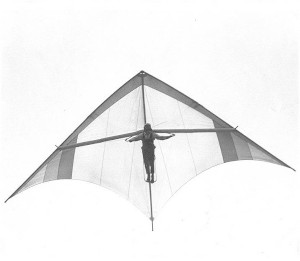
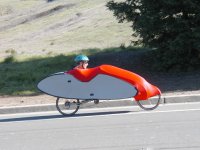
![b548dc30decfac965ba233300b64fe23ade8a0b2-1941x1300[1].jpg b548dc30decfac965ba233300b64fe23ade8a0b2-1941x1300[1].jpg](https://endless-sphere.com/sphere/data/attachments/188/188146-381c94e937f7cd632fe0eb4eac4dfc48.jpg)
